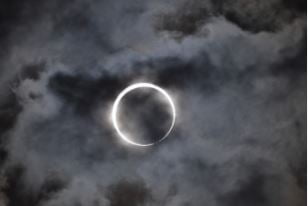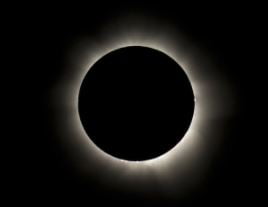Solar Eclipse
The day of the much anticipated Solar Eclipse is finally here. Today, millions will witness the sight of the moon’s shadow passing directly in front of the sun.
About 12 million people live directly in the 70-mile-wide – 2,500-mile-long zone where the total eclipse will appear on Monday. The event is likely to draw one of the largest audiences in history. While most will tune in via social media others have traveled to spots along the route to bask in its full glory.
If you want to be one of those who will make history witnessing the solar eclipse make sure to take all the precautionary measures.
Just so you have an idea of how much of a big deal this is, the last time such a spectacle unfolded from the Pacific to the Atlantic coast was in 1918. The last total eclipse seen anywhere in the United States took place in 1979. The August 21 eclipse is occurring after a gap of 99 years.
Which means that never before have so many people had the opportunity to see a total eclipse.
Those who won’t have to move one bit are the ones living in Oregon, Idaho, Wyoming, Nebraska, Kansas, Missouri, Illinois, Kentucky, Tennessee, Georgia, North Carolina and, finally, South Carolina, also passing over tiny slivers of Montana and Iowa.
For those people the eclipse will appear in its totality. Meanwhile, many areas of Canada, Central America and the northern part of south America will experience a partial eclipse.
When talking about such type of astronomical phenomenon, there’s no more trustworthy source than NASA. So in case you are not in the U.S.; NASA has your back.
How to watch
According to the NASA website, “Viewers will be provided with a wealth of images captured before, during, and after the eclipse by 11 spacecrafts, at least three NASA aircraft, more than 50 high-altitude balloons, and the astronauts aboard the International Space Station.” Many news channels will also broadcast the eclipse live.
The partial phase of the eclipse will begin over the Pacific Ocean at 1546 GMT (9.16 PM IST) and will end at 18.48 GMT (12.52 AM IST).
You can also check NASA’s interactive map to check a full list of different locations with the exact time of the eclipse taking place.
Phases
In the initial phase of the total eclipse, the Sun’s disk will be partially blocked by the moon which can last for over an hour and can be viewed by a pair of specially designed glasses.
In phase two of the rare eclipse, sunlight streaming through the Moon’s valleys will create a bright flash of light, giving the appearance of a diamond ring.

Phase three is refereed as the Baily’s Beads where only low lying valleys on the moon’s edge will allow shimmering light to pass through.

Phase four is complete solar eclipse, which lasts for under a minute in some of the locations. In the final stages, crescent will begin to peek from behind the moon.
More Stories for you
